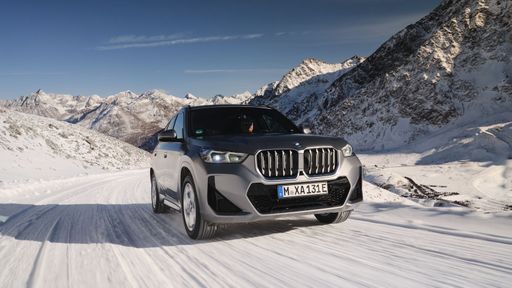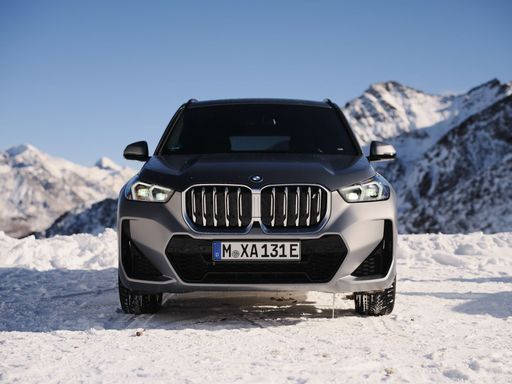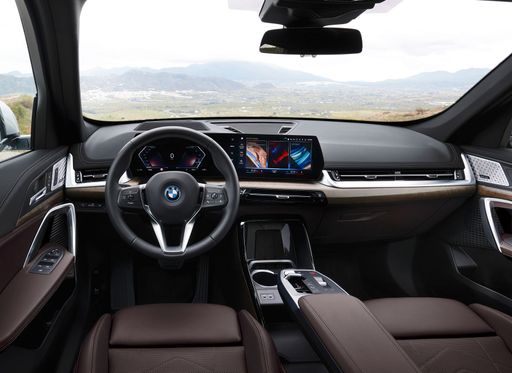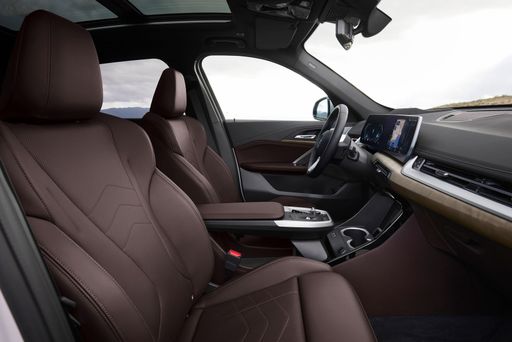BMW iX1 vs Citroen C5 Aircross - Differences and prices compared
Costs and Efficiency:
Looking at overall running costs, both models reveal some interesting differences in everyday economy.
Citroen C5 Aircross has a decisively advantage in terms of price – it starts at 29100 £, while the BMW iX1 costs 41800 £. That’s a price difference of around 12694 £.
In terms of energy consumption, the advantage goes to the BMW iX1: with 15.80 kWh per 100 km, it’s minimal more efficient than the Citroen C5 Aircross with 17 kWh. That’s a difference of about 1.20 kWh.
As for range, the Citroen C5 Aircross performs a bit better – achieving up to 520 km, about 57 km more than the BMW iX1.
Engine and Performance:
Power, torque and acceleration are the classic benchmarks for car enthusiasts – and here, some clear differences start to show.
When it comes to engine power, the BMW iX1 has a distinct edge – offering 313 HP compared to 210 HP. That’s roughly 103 HP more horsepower.
In acceleration from 0 to 100 km/h, the BMW iX1 is significantly quicker – completing the sprint in 5.60 s, while the Citroen C5 Aircross takes 8.30 s. That’s about 2.70 s faster.
In terms of top speed, the Citroen C5 Aircross performs slightly better – reaching 220 km/h, while the BMW iX1 tops out at 180 km/h. The difference is around 40 km/h.
There’s also a difference in torque: BMW iX1 pulls evident stronger with 494 Nm compared to 300 Nm. That’s about 194 Nm difference.
Space and Everyday Use:
Cabin size, boot volume and payload all play a role in everyday practicality. Here, comfort and flexibility make the difference.
Seats: offers more seating capacity – vs .
In curb weight, Citroen C5 Aircross is somewhat lighter – 1629 kg compared to 1940 kg. The difference is around 311 kg.
In terms of boot space, the Citroen C5 Aircross offers a bit more room – 565 L compared to 490 L. That’s a difference of about 75 L.
In maximum load capacity, the Citroen C5 Aircross performs somewhat better – up to 1668 L, which is about 173 L more than the BMW iX1.
When it comes to payload, BMW iX1 barely noticeable takes the win – 495 kg compared to 471 kg. That’s a difference of about 24 kg.
Who comes out on top?
Overall, the BMW iX1 shows itself to be slightly ahead and secures the title of DriveDuel Champion.
It convinces with the more balanced overall package and proves to be the more versatile choice for everyday use.
 @ BMW Group Press
@ BMW Group Press
BMW iX1
Costs and Consumption
View detailed analysis
Engine and Performance
View detailed analysis
Dimensions and Body
View detailed analysis
BMW iX1
The BMW iX1 wraps BMW's electric ambition into a compact SUV package that feels unexpectedly premium, with sharp handling and a crisp, modern cabin that keeps the driver in charge. It's ideal for buyers who want a stylish, quiet daily driver with useful practicality and tech-savvy touches — plus enough character to make the commute feel less like a chore and more like a short joyride.
details @ BMW Group Press
@ BMW Group Press
 @ BMW Group Press
@ BMW Group Press
 @ BMW Group Press
@ BMW Group Press
 @ BMW Group Press
@ BMW Group Press
 @ BMW Group Press
@ BMW Group Press
Citroen C5 Aircross
The Citroën C5 Aircross feels like a sofa on wheels, delivering a calm, floaty ride and clever packaging that makes life with luggage and kids noticeably easier. Quirky French styling and a supremely practical, family-focused cabin mean it quietly wins hearts by prioritising comfort over showroom bravado.
details @ Citroën / Stellantis Media
@ Citroën / Stellantis Media
 @ Citroën / Stellantis Media
@ Citroën / Stellantis Media
 @ Citroën / Stellantis Media
@ Citroën / Stellantis Media
 @ Citroën / Stellantis Media
@ Citroën / Stellantis Media
 @ BMW Group Press
@ BMW Group Press
|
 @ Citroën / Stellantis Media
@ Citroën / Stellantis Media
|
|
|
|
Costs and Consumption |
|
|---|---|
|
Price
41800 - 54600 £
|
Price
29100 - 41600 £
|
|
Consumption L/100km
-
|
Consumption L/100km
2.5 - 5.4 L
|
|
Consumption kWh/100km
15.8 - 17.1 kWh
|
Consumption kWh/100km
17 kWh
|
|
Electric Range
436 - 463 km
|
Electric Range
81 - 520 km
|
|
Battery Capacity
64.80 kWh
|
Battery Capacity
17.8 - 73 kWh
|
|
co2
0 g/km
|
co2
0 - 121 g/km
|
|
Fuel tank capacity
-
|
Fuel tank capacity
55 L
|
Dimensions and Body |
|
|---|---|
|
Body Type
SUV
|
Body Type
SUV
|
|
Seats
5
|
Seats
5
|
|
Doors
5
|
Doors
5
|
|
Curb weight
1940 - 2085 kg
|
Curb weight
1629 - 2184 kg
|
|
Trunk capacity
490 L
|
Trunk capacity
565 L
|
|
Length
4500 mm
|
Length
4650 mm
|
|
Width
1845 mm
|
Width
1870 mm
|
|
Height
1616 mm
|
Height
1695 mm
|
|
Max trunk capacity
1495 L
|
Max trunk capacity
1668 L
|
|
Payload
495 kg
|
Payload
446 - 471 kg
|
Engine and Performance |
|
|---|---|
|
Engine Type
Electric
|
Engine Type
Petrol MHEV, Electric, Plugin Hybrid
|
|
Transmission
Automatic
|
Transmission
Automatic
|
|
Transmission Detail
Reduction Gearbox
|
Transmission Detail
Dual-Clutch Automatic, Reduction Gearbox
|
|
Drive Type
Front-Wheel Drive, All-Wheel Drive
|
Drive Type
Front-Wheel Drive
|
|
Power HP
204 - 313 HP
|
Power HP
145 - 210 HP
|
|
Acceleration 0-100km/h
5.6 - 8.6 s
|
Acceleration 0-100km/h
8.3 - 11.2 s
|
|
Max Speed
170 - 180 km/h
|
Max Speed
170 - 220 km/h
|
|
Torque
250 - 494 Nm
|
Torque
230 - 300 Nm
|
|
Number of Cylinders
-
|
Number of Cylinders
3 - 4
|
|
Power kW
150 - 230 kW
|
Power kW
107 - 157 kW
|
|
Engine capacity
-
|
Engine capacity
1199 - 1598 cm3
|
General |
|
|---|---|
|
Model Year
2022 - 2023
|
Model Year
2025
|
|
CO2 Efficiency Class
A
|
CO2 Efficiency Class
D, A, B
|
|
Brand
BMW
|
Brand
Citroen
|
Is the BMW iX1 offered with different drivetrains?
The BMW iX1 is available as Front-Wheel Drive or All-Wheel Drive.
The prices and data displayed are estimates based on German list prices and may vary by country. This information is not legally binding.
